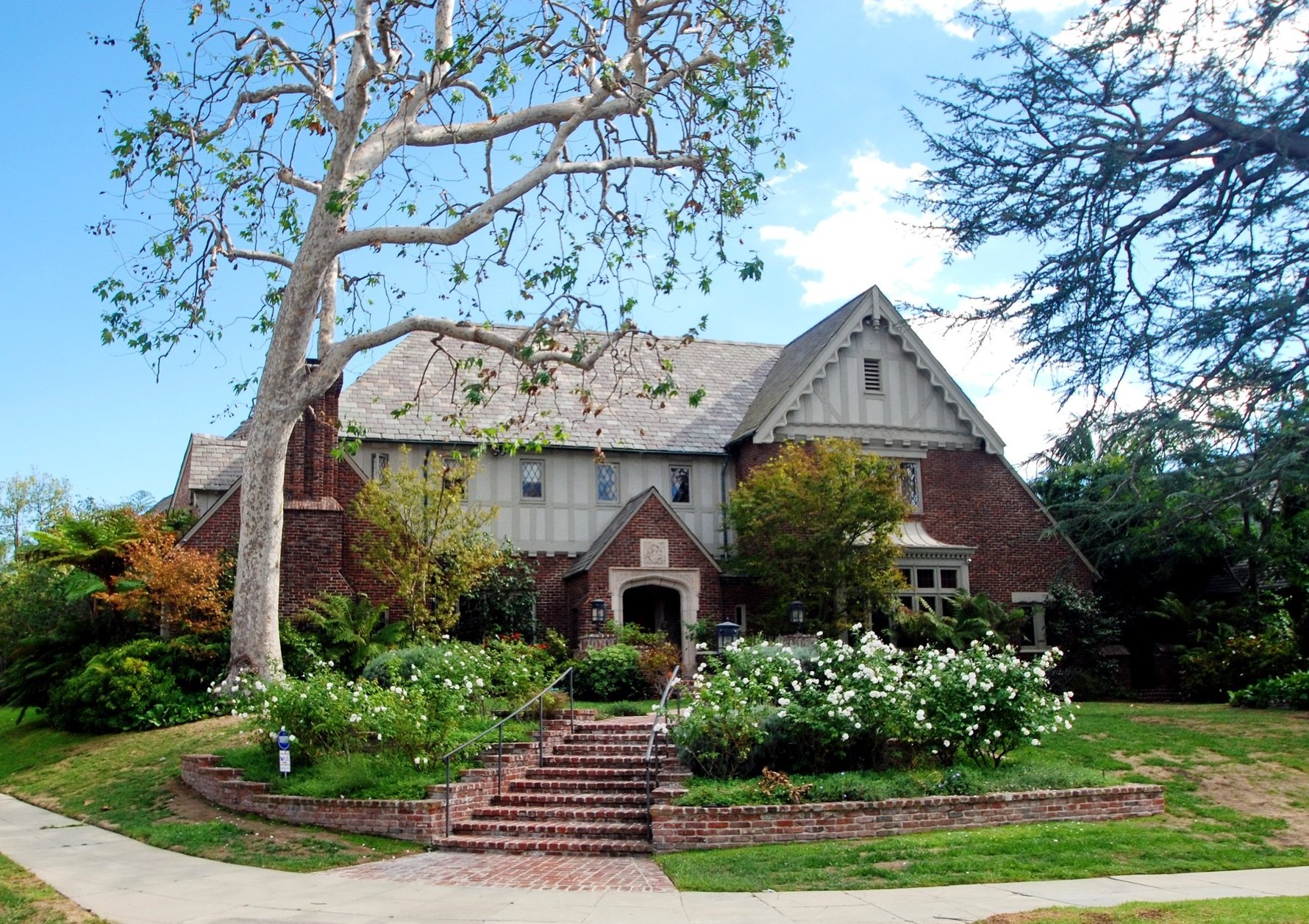#11080. Elegant Tudor-Style Mansion Facade with Half-Timbering Elements

The image shows a magnificent example of Tudor style residential architecture. This two-story mansion features a characteristic asymmetrical facade with a combination of brick masonry and light plastered areas with decorative wooden beams – a technique known as half-timbering. The steep roof with expressive gables and multiple slopes is another defining element of the Tudor style.
The central entrance is designed as an arched portal with stone framing, giving the facade elegance and monumentality. The windows have traditional lead mullions forming a diamond pattern, typical for this architectural style. The decorative details on the gable are particularly interesting – carved brackets create a rhythmic visual pattern.
The landscape design excellently complements the architecture: a brick staircase with metal railings leading to the house, brick retaining walls, and abundant greenery with flowering shrubs soften the strictness of architectural forms. The majestic tree in the foreground creates an organic transition between the building and its natural surroundings.
When designing a Tudor-style facade, one can employ techniques such as contrasting material combinations (brick and plaster), decorative half-timbering, multi-pitched roof with prominent gables, arched elements in the entrance area, windows with small panes, and the use of natural materials to create an authentic image.